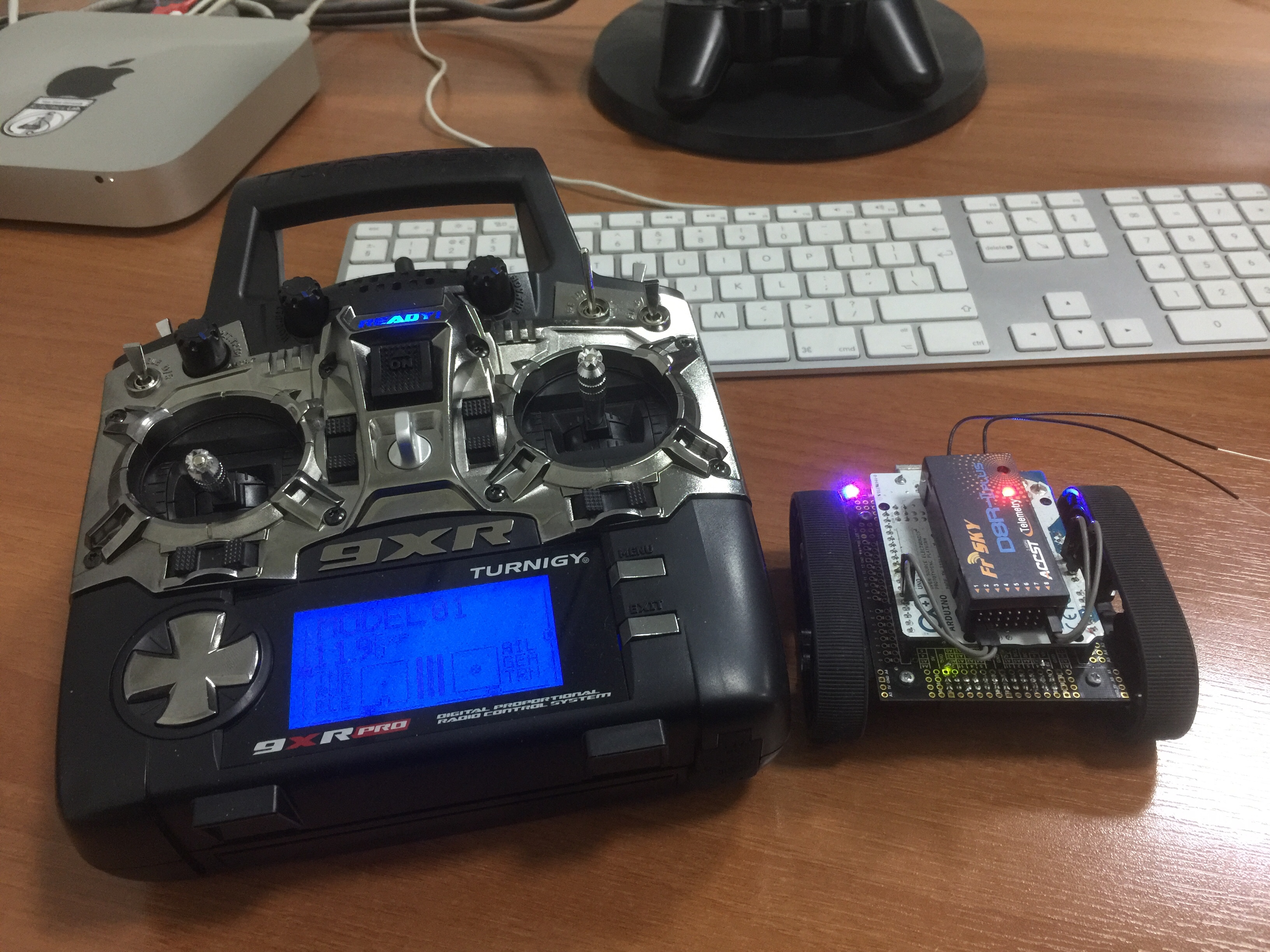Bare Metal Lisp - RC Control using Ferret
Some sample code to demonstrate FFI capabilities of Ferret on embedded systems. Ferret is a free software Clojure implementation, it compiles a restricted subset of the Clojure language to self contained ISO C++11 which allows for the use of Clojure in real time embedded control systems. See Project Home Page. Mobile platform used in this post is a Zumo Robot (required third party libraries) and the microcontroller is a Arduino Uno / Atmega328.

(configure-ferret! :command "mv ferret-rc-control.cpp ferret-rc-control.ino")
Ferret outputs a cpp file however Arduino IDE expects a ino file. We override build command to rename the cpp file to a ino file.
(configure-runtime! FERRET_MEMORY_POOL_SIZE 1024)
On embedded systems Ferret can be configured to avoid calling malloc/free. Enabling memory pooling will allocate (1 kb in this case) memory to be used as heap.
Ferret's FFI is modeled after Gambit scheme. Whereas Gambit scheme lets you embed C into Scheme, Ferret lets you embed C or C++ into Clojure.
(native-header "ZumoMotors.h") (defn new-motor [] "__result = obj<value<ZumoMotors>>();")
A value object is useful when dealing with C++ objects. It acts as a container for native object. It can wrap any type T, once wrapped it can be used just like any other Ferret variable. (Any arguments passed to obj will be forwarded to T constructor.)
(defn speeds [m s1 s2] "ZumoMotors motor = value<ZumoMotors>::to_value(m); motor.setSpeeds(number::to<int>(s1), number::to<int>(s2));") (defn pulse-in [pin] "__result = obj<number>(pulseIn(number::to<int>(pin), HIGH,25000));")
Calling C++ functions with Ferret variables is just as easy, every Ferret object type has a corresponding to / from function/s. These can be used to convert native types to ferret types and vice versa. (Ferret is a strongly, dynamically typed language. If you try to convert a ferret number to a value you will get a segmentation fault.)
;; throttle - ch 1 ;; steering - ch 2 (defn read-control [] (let [throttle (scale (pulse-in 4) 981 1998 0 254) steering (scale (pulse-in 5) 981 1998 -254 254)] (list (if (< throttle 5) ;; setup dead zone 0 throttle) (if (< -5 steering 5) ;; setup dead zone 0 steering)))) (let [motor (new-motor)] (forever (let [[throttle steering] (read-control)] (speeds motor (+ throttle steering) (- throttle steering)))))
Radio-control transmitters and receivers are used to drive model cars or planes. They typically have a bunch of control surfaces like joysticks. Each degree of freedom that the controller gives is assigned a channel. They are typically used to control servos so each channel outputs a signal called PWM (Pulse Width Modulation). i.e Width of the signal changes as control input changes. Arduino platform has a function called pulseIn which we wrapped in a Ferret function that returns the length of the pulse, this pulse is then converted to a PWM value which is used to drive the motors on the robot.
Forward motion is controlled by mapping the current pulse width on channel 1 to a value between 0 and 254. No throttle 0 PWM full throttle 254 PWM. Steering is controlled in a similar manner but instead of mapping from 0 to 254 it is mapped to -254 to 254. Final motor speed is calculated by adding throttle and steering controls together and apply the resulting PWM to motors.